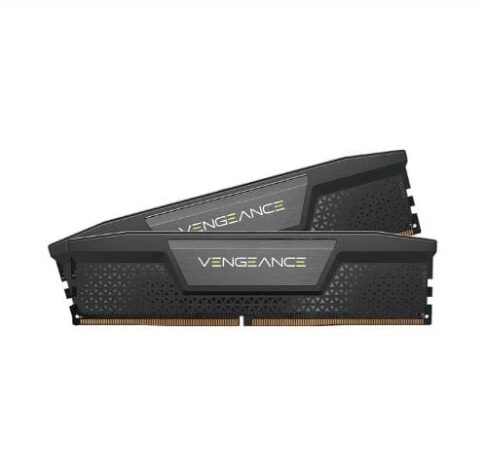Maximizing Performance: Is It Better to Have More RAM or Storage?Maximizing Performance, Is It Better to Have More RAM or Storage?

In today’s digital age, the performance of your computer can make or break your productivity. Whether you’re a gamer, a professional working with large files, or a casual user, choosing the right balance between RAM storage and storage is essential to keep your system running smoothly. But the burning question remains: Is it better to have more RAM or storage?
In this article, we’ll dive into the differences between RAM and storage, explore how each component impacts your computer’s performance, and help you make an informed decision based on your specific needs. So, let’s explore how RAM storage and storage work together to create the ultimate computing experience.
Understanding RAM: Your System’s Short-Term Memory
RAM (Random Access Memory) is like your computer’s short-term memory. It stores information that your system needs immediate access to, such as running applications, active files, and background processes. The more RAM storage your computer has, the better it can handle multiple tasks simultaneously.
But why is RAM so important? Here are a few reasons why having enough RAM can dramatically impact your experience:
Smoother Multitasking
Think of RAM as your desk while you’re working. The larger the desk, the more papers, tools, and materials you can spread out without feeling cluttered. If you frequently switch between programs—like keeping several tabs open in your browser, editing documents, and running music in the background—more RAM storage will ensure everything runs smoothly without slowing down.
Gaming and Graphics
Gamers, designers, and video editors rely heavily on RAM to power graphics-intensive applications. When you’re playing the latest video games or working on high-definition video projects, your computer needs sufficient RAM storage to process large amounts of data at once, ensuring smoother gameplay or editing experience without lagging.
Running Complex Programs
Programs like Photoshop, AutoCAD, and other software that handle large files or perform detailed calculations need extra RAM to function efficiently. If you’re into creative work or programming, investing in more RAM storage can save you from frustrating delays and system crashes.
Understanding Storage: Your System’s Long-Term Memory
While RAM is responsible for temporary, short-term operations, storage is your computer’s long-term memory. It’s where all your files, software, and even the operating system are stored. The two main types of storage devices are HDDs (Hard Disk Drives) and SSDs (Solid-State Drives).
Storing Files and Data
Imagine you have a large filing cabinet to keep your documents. The bigger the cabinet (or storage), the more data you can store. Whether you’re saving videos, photos, documents, or large game files, you need adequate storage to house all your essential data. If you frequently work with large files, such as high-quality videos or graphics, having sufficient storage is essential to avoid running out of space.
System Speed with SSDs
One of the biggest advances in recent years has been the rise of SSD storage. SSDs are significantly faster than traditional HDDs, offering quicker access to your files, faster boot times, and a more responsive system overall. Upgrading from an HDD to an SSD can feel like breathing new life into an old machine, even if you don’t increase your RAM storage.
Long-Term Data Safety
Storage isn’t just about holding your files—it’s also about ensuring they remain safe and accessible. Unlike RAM, which resets every time you turn off your system, your storage remains intact, keeping your files ready whenever you need them. The bigger the storage, the more you can save without constantly deleting old files to make room for new ones.
The Great Debate: Is It Better to Have More RAM or Storage?
This is the golden question: Is it better to have more RAM or storage? The answer depends on what you primarily use your computer for.
Casual Users
If you’re a casual user who mostly browses the internet, watches Netflix, and uses simple programs like word processors, then the answer leans towards storage. Having adequate RAM storage is still important, but 8GB to 16GB of RAM should be more than enough for daily activities. On the other hand, you’ll need more storage to hold all your files, pictures, and software.
Gamers and Creative Professionals
For gamers, designers, and video editors, the answer is a little different. These tasks are often RAM-hungry and require large amounts of RAM storage to process high-performance graphics and handle multitasking efficiently. In these cases, 16GB or more of RAM can be a game-changer, alongside 1TB or more of storage to house those massive files.
Business and Office Use
For business professionals, both RAM and storage play essential roles. If you run complex programs, handle large spreadsheets, or use multiple applications at once, RAM storage becomes vital to keep everything running smoothly. For file-heavy tasks, such as managing large databases or archives, you’ll need plenty of storage to keep everything safe and accessible.
How to Choose the Right Balance Between RAM and Storage
When deciding whether to invest more in RAM storage or storage, consider your primary computer activities:
- Do you open dozens of tabs while working? Extra RAM will help keep everything running without delays.
- Do you work with large files, like videos or high-resolution images? You’ll need ample storage to accommodate these files.
- Do you need faster boot times and improved system performance? An SSD can speed up your computer’s overall responsiveness, even if you don’t add more RAM.
Final Thoughts: Finding the Perfect Balance
Ultimately, the key to optimizing your computer’s performance lies in finding the right balance between RAM storage and storage. If you’re mainly looking for faster performance when running applications, upgrading RAM will make a noticeable difference. On the other hand, if you’re working with a lot of data or want faster load times, boosting your storage—especially with an SSD—should be your priority.




